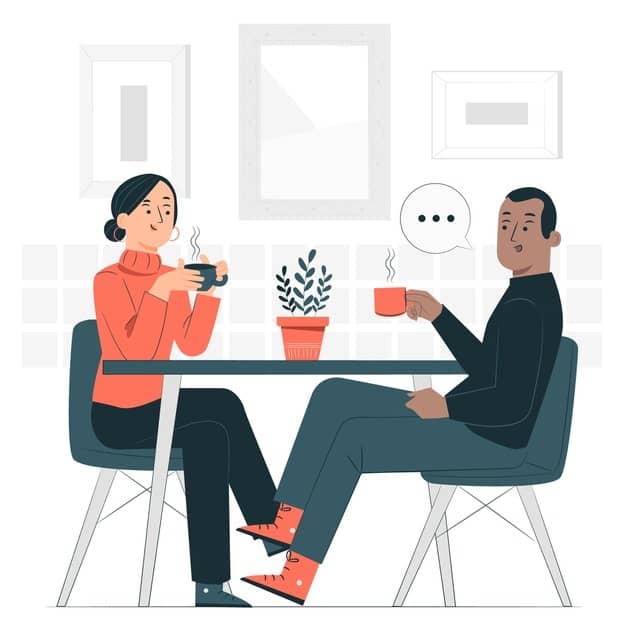Table of Contents
In this article, you’ll learn What Is Two-Way Communication, Types of Two-Way Communication, 6 Steps Involved in Two-way Communication Processes, Two-Way Communication Systems and more.
What Is Two-Way Communication?
‘Can you hear me now? How about now?’ Who can forget that iconic commercial for wireless phone service where the hapless signal tester is wandering the countryside looking for feedback? His quest for a response to his message is an attempt to engage in two-way communication with the person on the other end. Let’s look at a simple model for two-way communication. Two-way communication is when one person is the sender and they transmit a message to another person, who is the receiver. When the receiver gets the message, they send back a response, acknowledging the message was received. The model looks like this.
Two-way communication is essential in the business world. Messages are transmitted between employers, employees, customers, and other stakeholders, and feedback is required to be certain that the message was received and understood.
Types of Two-Way Communication
Two-way communication doesn’t always mean instantaneous face-to-face (or these days, screen-to-screen) conversations. It also doesn’t exclusively involve dialogue between managers and subordinates. The latest innovative internal communications tools let you transform traditional communication channels into two-way messaging tools.
Here are just some of the ways that two-way communications are as follows:
- Horizontal communication: This occurs between employees on the same level, fostering teamwork and knowledge sharing.
- Vertical communication: This takes place between managers and employees, allowing for feedback, goal setting, and performance evaluation.
- Asynchronous communication: This includes emails, internal forums, or surveys, allowing for thoughtful responses and participation at convenient times.
- Instantaneous communication: This can involve instant messaging, video conferencing, or internal chat platforms, enabling real-time discussions and quick updates.
6 Steps Involved in Two-way Communication Processes
Steps involved in two-way communication processes are given below:
1. Develop an idea the right step is to develop an idea that the sender wants to transmit.
2. The second step is to encode the idea in suitable words, charts of other symbols for transmission. In this step, the sender decides the method of transmission so that the words and symbols may be organized for transmission.
3. The third step is to transmit the message by the chosen method. Senders also try to keep their communication channels free from barriers so that their messages have a chance to reach receivers.
4. The fourth step is to allow another person to receive a message. At this point, the initiative is transferred to the receiver. If the receiver does not function, the message is lost.
5. The fifth step is to decode the message so that it can be understood. The sender wants the receiver to understand the message exactly as it was sent. Understanding can occur only in a receiver’s mind. A communication may make others listen, but there is no way to make others understand. The receiver alone chooses whether to understand or not. Many employers overlook this fact when giving instructions. They think that telling someone is sufficient but communication is not effective until there is understanding.
6. The last step in the communication process is for the receiver to use the communication. The receiver may discard it, perform the task as directed, store the information or do something else.
Two-Way Communication Systems
Many businesses and municipal services rely on two-way communication systems to stay in touch with their employees on-site and in the field. Some of the most common examples of two-way communication systems are the radio, telephone, and computer-aided dispatch systems used by police, fire, and emergency response personnel. These systems allow dispatchers and supervisors to keep in touch with individuals and to coordinate the activities of groups of responders.
Two-way communications systems are also routinely used in the construction and building trades, public transportation, the trucking industry, and aviation by commercial and non-commercial pilots, just to name a few.
Two-way communication systems vary greatly in sophistication and special features. They range from simple handheld two-way transceivers that use a single dedicated channel to more complex systems that allow a large number of users to share several channels. The type of system chosen depends on many factors, such as the intended use, the location, the number of users, the frequency band, and the cost of the system. Regardless of the type of system chosen, the one common feature is that all of the components must be compatible and work together to support a common purpose.
Examples
Jack is an on-call service technician for a large medical supply company. At 3:00 a.m., he is awakened to the sound of his BlackBerry signaling an incoming email. The email from the dispatcher alerts him to an emergency call from a local hospital. The anesthesia cart in the operating room is malfunctioning, and there is an operation scheduled for 7 a.m. that morning. Jack sends an email back to the dispatcher letting them know he received the service call, and then he phones the client to get the details and to let them know he’s on the way.
On the way to the hospital, Jack spots a fast food restaurant and turns into the drive-thru lane. A little shot of caffeine is just what the doctor ordered! He’s surprised to see two cars ahead of him, but he inches his way up to the crackling speaker and places his order for a large black coffee, no sugar. Then he makes his way to the window, pays for the coffee, and thanks to the clerk before getting back on the road.
